In a desire to commit to Nature, Maison Canard-Duchêne had beehives installed in its park with century-old trees in Ludes in 2021. Attached to the Champagne tradition, it is also attached to biodiversity. Focus on this action to develop new production methods that are ever more involved in favor of the environment and to preserve our fabulous Champagne terroir.
The nature installation

The Estate saw new inhabitants nest in 2021. 5 beehives were installed near the trees in our park.
Buzzing sounds can now be heard around the House.
The weather conditions in 2021 were bad for the bees, as were the grape harvests. As a result, the first harvest took place this year, in 2022.
They are established only twice a year, so that the honey is sufficiently ripe, and to give nature the time it needs to do its work.
The nectar brought by the foragers is transformed during multiple stages and in a delicate way. So equip yourself with patience and respect!
An action that makes sense
By preserving bees, Domaine Canard-Duchêne can then further promote the defense and enhancement of the environment. It is also a project that generates group cohesion within our House. Our main desire is to adopt a deep and sustainable CSR approach, and to embody it as much as possible. Participating in the pollination of our territory is even more coherent. Producing our honey also allows us to offer you ever more deliciousness with a unique product, 100% pleasure and overflowing with coherence. You can find our honey on sale exclusively at the estate's boutique.
Biodiversity Partners

The value of bees is no longer in doubt, they are essential.
By foraging, they pollinate. They carry, in spite of themselves, pollen from one flower to another. Thus, by depositing the pollen grain on the pistil of a flower of the same species, there is fertilization.
Nearly 70 to 80% of flower reproduction depends on pollinating insects.
If one actor is missing from this process, the entire ecosystem is threatened: agriculture, the diversification of our diet, animals that feed on plants, etc.
Divine and varied nectars
There are different types of honey. We can mainly differentiate them according to the period, geographical origin and flower species.
- Monofloral honey: 80% of it comes from the same variety.
- All-flower or polyfloral honey: it has a varied taste, aroma and color depending on the terroir and the species of flowers foraged.
- Mountain honey: it is produced in high-altitude meadows and has a strong taste.
- Seasonal honey:
Spring honey: clear, subtle, delicate, mainly from fruit trees.
Summer honey: produced from summer flowers, golden yellow to dark brown in color.
Although we are on the “Montagne” of Reims, the House currently has a spring flower honey, subtle, sweet and creamy!
Instant recipe: poultry, spices, figs and honey
The nectar comes from flowers, a delicious combination of honey and champagne can occur.
We then recommend that you make the following recipe: breaded chicken strips with gingerbread, honey-roasted figs and mashed potatoes with hazelnuts.

For 4 people, plan on:
- 8 chicken strips,
- A little more than 100 g of butter,
- 3 slices of gingerbread,
- 8 figs,
- A pot of Canard-Duchêne honey
- 10 potatoes,
- 10 cl of milk,
- 100 g of shelled hazelnuts,
- Salt and pepper.
For the mash: cook the potatoes, previously peeled, in water. Crush the hazelnuts and put them in the oven for 3 to 4 minutes. Mash the potatoes with a fork and add the heated milk, the butter in pieces and the roasted hazelnuts.
Toast the gingerbread slices. Blend them to reduce them to powder. Wash the figs and make 2 cuts.
Arrange them in a dish, pouring honey over them and bake for 10 minutes at 180°C. Brown the chicken strips in butter for 2 minutes.
Then, brush them with honey and roll them in the gingerbread breadcrumbs. Arrange the plates and enjoy with a glass of our Léonie Brut cuvée.
A delicious dish to awaken your taste buds!




